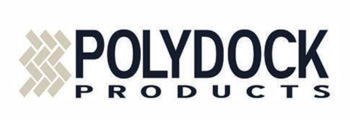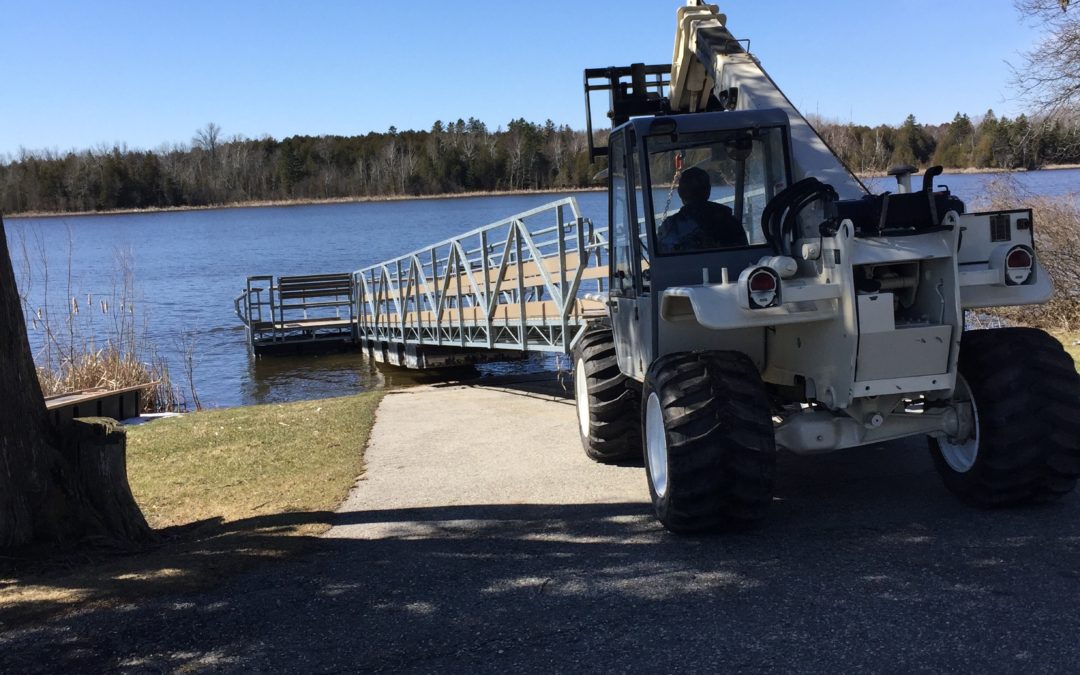
Apr 9, 2019
The 2019 DOCK INSTALL SEASON HAS BEGUN!
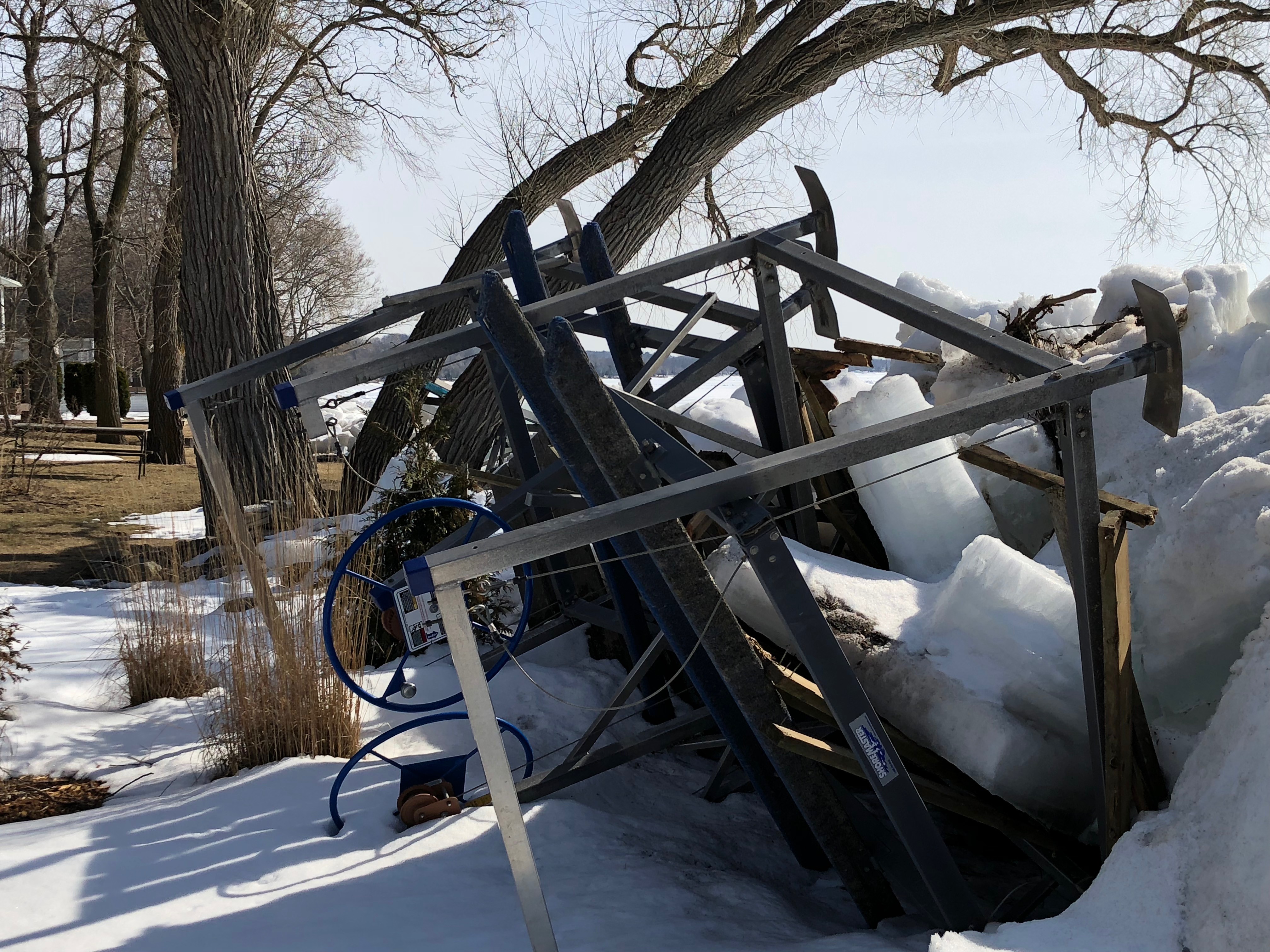
Ice Damage
The install season for 2019 has begun on the Door County peninsula. We started doing some commercial installs a week ago in select areas.
The Coast Guard has opened the shipping channel to Green Bay, and this means the ice can move in and out with every shift on the wind.
At this early time, we can only do installs in areas where the ice is out, and there is little danger of it floating back in. The results can be disastrous.
Our crews will be expanding into more areas as weather permits. We’ve all been looking forward to this, and our crews and equipment are ready. While it is impossible to set a firm schedule more than a day out, we continue to make progress.
WHAT PART WILL NATURE PLAY IN THE SCHEDULING?
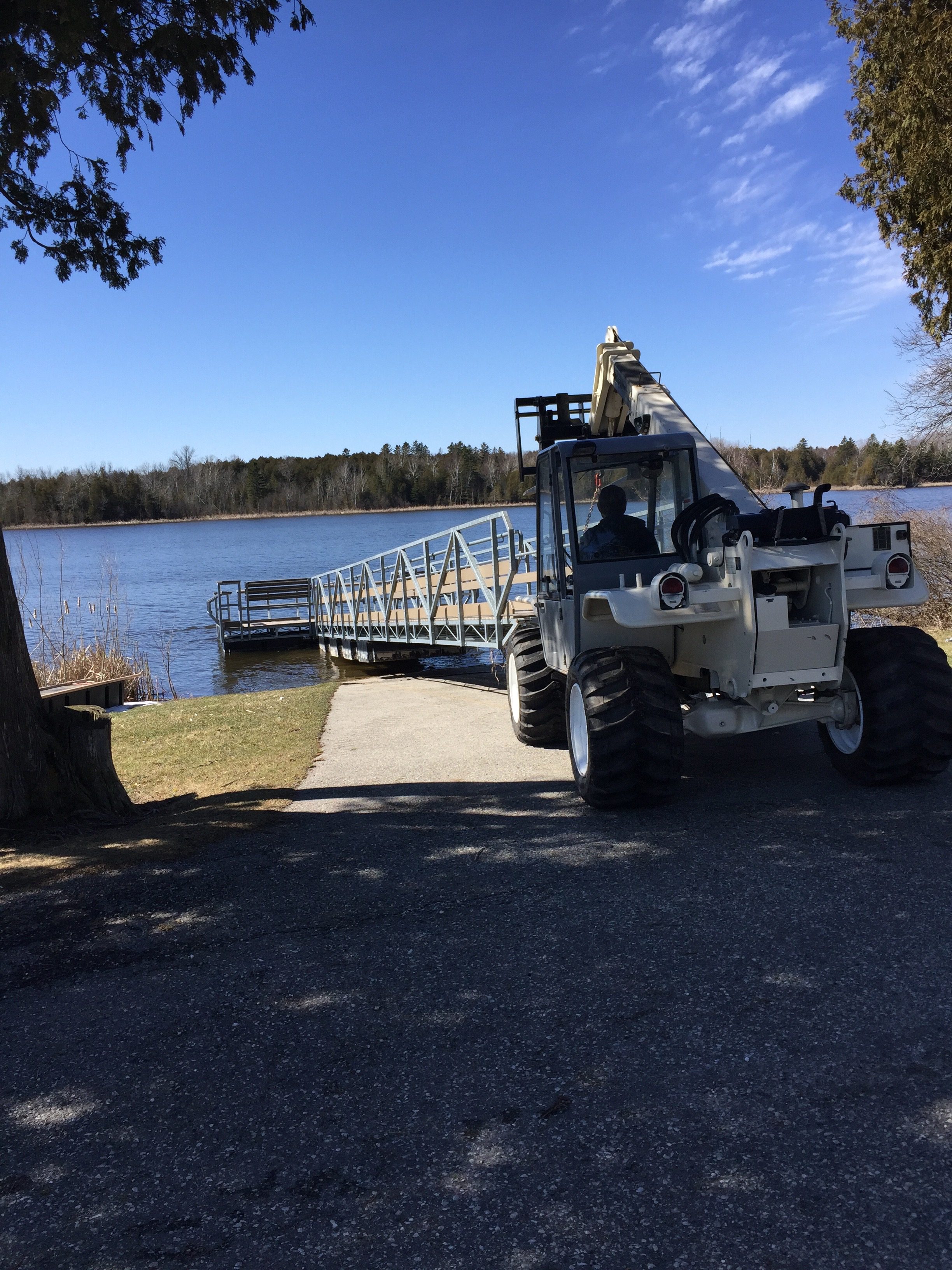
ATF 2 Install
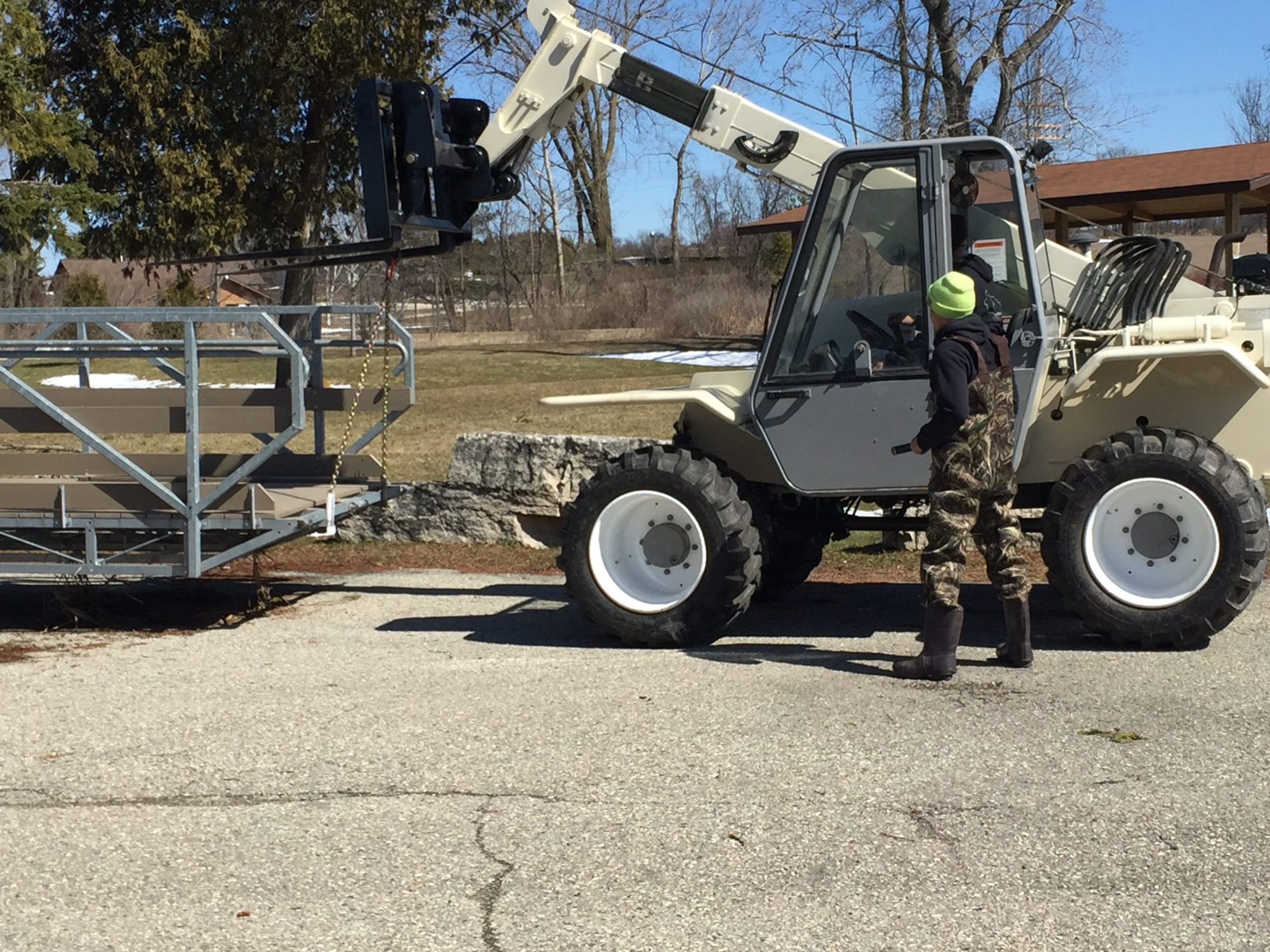
ATF 1 during an install
We know Nature will probably throw a few curves at us. Last year it was an 18″ snowfall two weeks into the season.
We now have three ATF’s (the big machines we use), and the trucks and trailers are ready.
WHAT TO EXPECT THIS YEAR
The water depth looks like it will be up again this year due to the heavy snowfall. Lake Michigan did not freeze over, so there was evaporation throughout the winter. At the same time, there were more late-season snowstorms. If the legs on your dock were barely above the dock last year, you will likely receive a call from our Service Manager about the need to replace them. Longer legs may be necessary to get you safely above the water for storms.

John Englebert
WHO CAN YOU CONTACT WITH SCHEDULING ISSUES?
If you have a question or particular need, please contact John Englebert, our very experienced Service Manager and Scheduler. You can reach John at 920-495-2860 or email john@wisconsinpws.com.
John does an excellent job of accommodating requests as long as Nature co-operates. As the season progresses the schedules will get tighter but John always seems to find a way to make it work (if Nature co-operates).
Have a repair that needs attention? Call John to schedule it!
Looking for something new this year? Want to change your layout? Call Jerry (920-493-4404) or Dave (920-905-2588)

Jerry EnglebertOwner
Dave Kalista
Owner
Don’t forget – Give us a call If you have a dock or boatlift topic you would like to see addressed on our website. This year you will see topics like “Sea gull deterrents – Updated, ” How to place your boat onto your lift,” “Boat Lift Insurance”, and other issues important to our customers.
WHERE IS PIER AND WATERFRONT SOLUTIONS?
We are located in the center of the Door County Peninsula at 7325 St. Hwy 42/57. That’s 1 mile North of County MM (Hwy 42) and 3 miles South of Sturgeon Bay. Look for the Idlewild Road intersection.
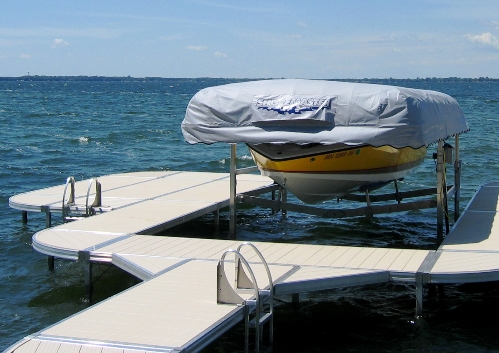
Apr 2, 2019
Boat Lift Accessories
Boat lift accessories relieve a lot of stress and work. You don’t have to worry about the hull and motor getting fouled after sitting in the water for too long. Think of the time and work you’ll save by not having to put your boat back on the trailer every time you use it. It also relieves your stress during a storm.
Life is just better when you’ve got a boat lift with the right accessories to protect your boat. Accessories for your boat lift include things like solar systems and wireless remote controlled lift motors or a simple canopy.
Here’s a summary of the most popular boat lift accessories that we recommend for your lift:
Guide-Ons
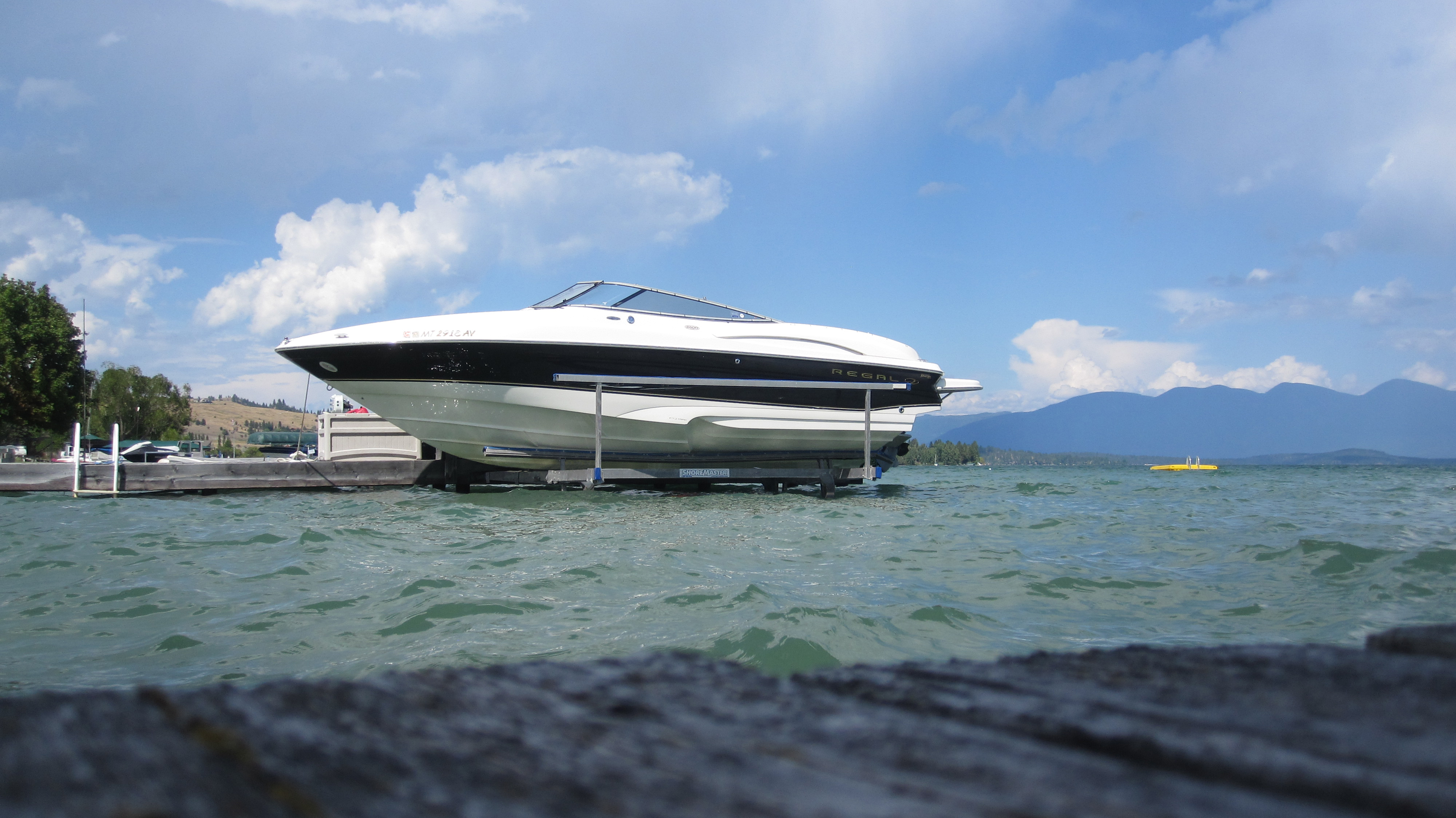
Full-Length Guides
Guide-ons make it easier to get the boat on the lift and keep both the boat and lift from sustaining damage in the process.
They come in two basic configurations including:
Vertical PVC guide-ons which consist simply of vertical PVC or foam posts, often covered by fabric. As the name implies they guide boats to help you get your boat onto the lift correctly.
Much more popular are the full-length guide-on systems. Full-Length guide-ons consist of a pair of wood or aluminum guides that mount near the sides of the boat rack. They can adjust both horizontally and vertically for a perfect fit to your boat. They are a physical aid for centering and loading your boat onto the lift.
The guide-ons come carpeted or with a vinyl covering. Vinyl covered guides greatly reduce the maintenance of the guides and are preferred by most boaters.
Bow Guide/Stops
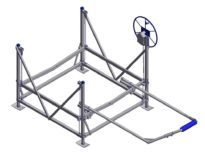
ShoreMaster Bow Guide Schematic
Bow Guide/Stops are a bow-shaped beam at the front of the lift. They keep you from overrunning the boat lift. They ensure proper positioning without effort. It prevents the boat from being pushed too far into the lift by the waves. A properly positioned boat helps reduce the strain on the cables by applying equal weight to all the cables. This is crucial to the life of the cables.
Pontoon bunks
Most Pontoon bunks come in two styles:
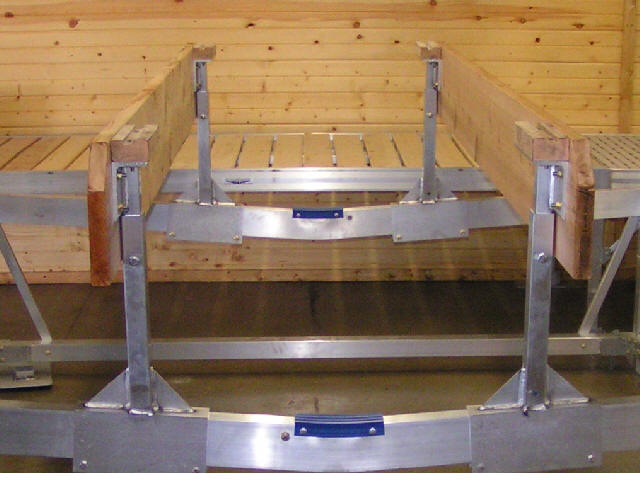
Pontoon deck support

Pontoon Tube Supports
As the names imply the tube supports sit under the tubes and the deck support is under the deck. Opinions differ on which one is better to use. It all comes down to personal choice.
Solar Panel Systems
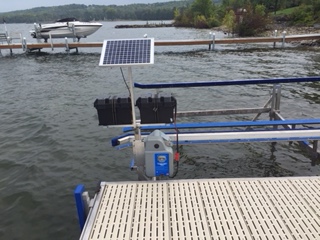
24 V Solar Panel arrangement
Your boat lift may include various systems that run off of electricity. This includes the boat, a lift motor or lighting. We can set up a solar charging system to charge your boat battery as well
as an electric lift motor.
A solar system consists of a solar panel which can attach to the boat lift or battery box. The kit will charge either a battery in a battery tray, or directly charge the battery in your PWC personal watercraft or boat lift. We size the panels and batteries to match your needs. Install a solar charging system, and you can keep your 12v or 24V batteries or personal watercraft motor charged all summer with no hassle.
Floodlights
Ever tried to get started early in the morning or return late at night? Maybe it’s an early morning trip or coming in late at night. It’s always best to be able to see what you are doing.
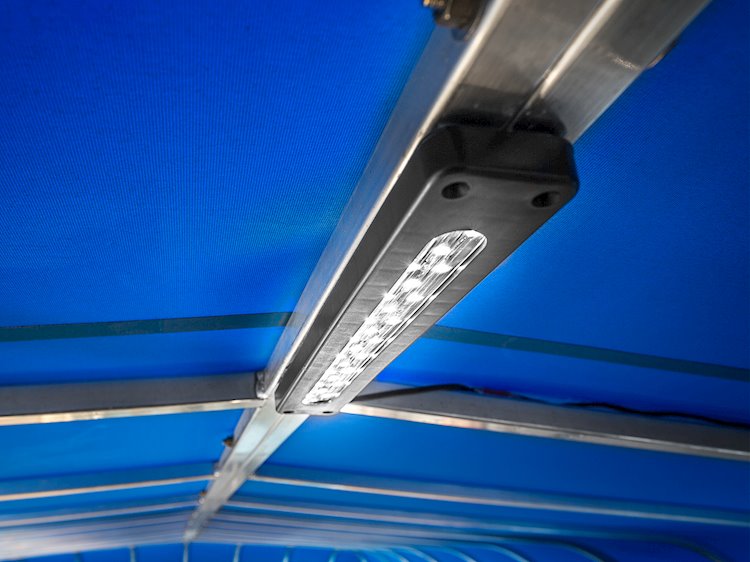
Canopy lights
Maybe it’s making sure everything is battened down during a storm. Sometimes, you have to raise or lower your boat while it’s dark. Finally, it could simply be lights to allow you to see your lift from afar. Having lights can be a lifesaver.
Install an LED light system to provide lighting for your dock and boat lift. Hint: Place a red and green light at the end of your dock, so you know what side you are approaching in the dark. Do you need a light to safely board or exit your boat? These benefits can all be integrated into an electrical system of your boat lift. You can get the power from your solar panel system. Use a wireless remote to turn the lights on and off.
Supports for a boat
Cradles and bunks for your lift support your boat on the lift safely. There a whole range of different types of hull supports you can install on your boat lift to get that perfect fit.
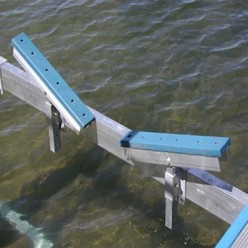
ShoreMaster Cradles
These come in several categories:
Cradles are pivoting pads that stabilize and support the hull of your boat. Today, these are seldom used. People prefer the use of bunks which distribute the weight over a large area.
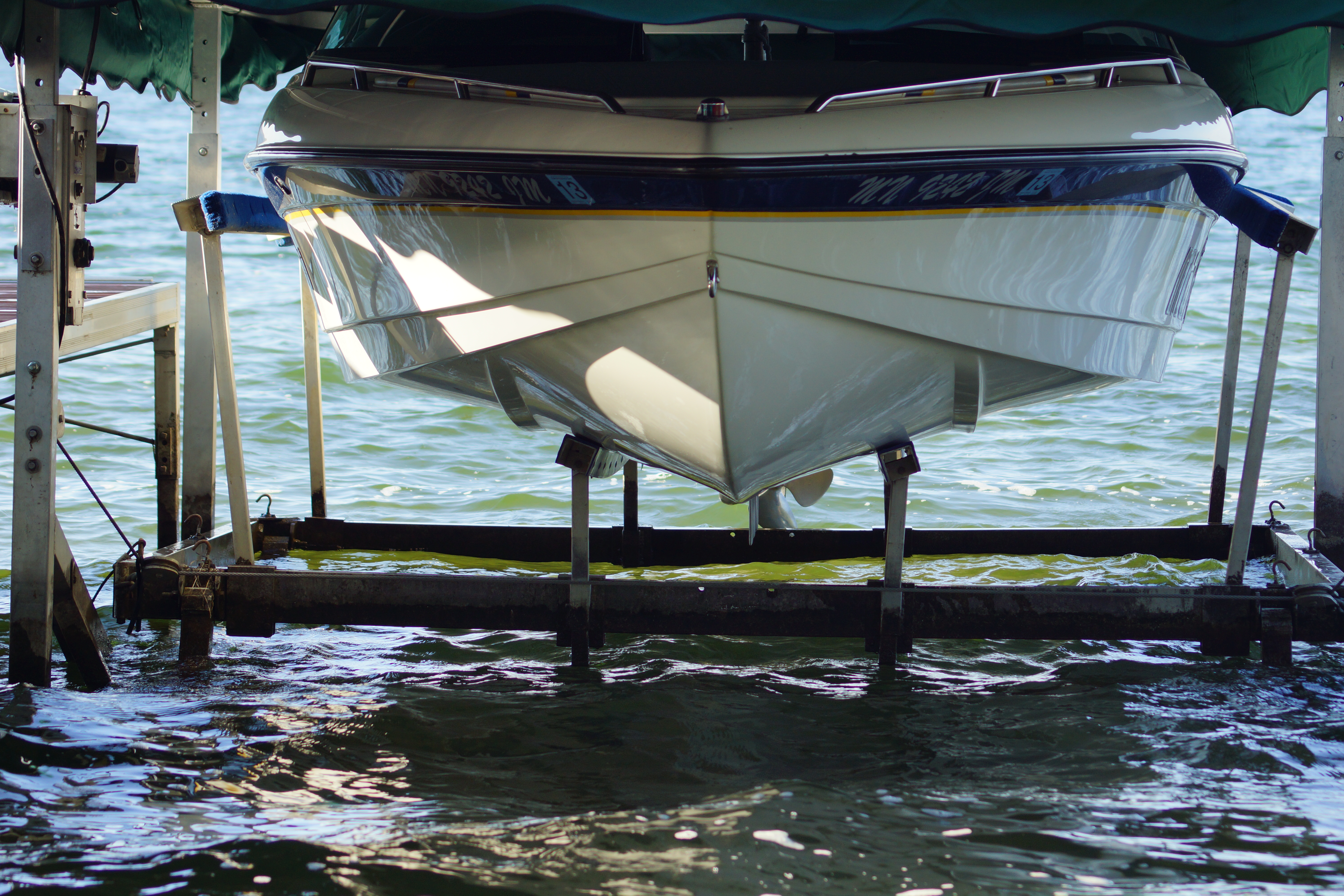
Full-length Bunks and Guide – on
Full-length bunks provide maximum support and stability. These aluminum extrusions will contour to your watercraft and are
covered in vinyl which resists the adhesion of sand and debris. They can be offset toward your pier for easier access as well.
be careful when offset
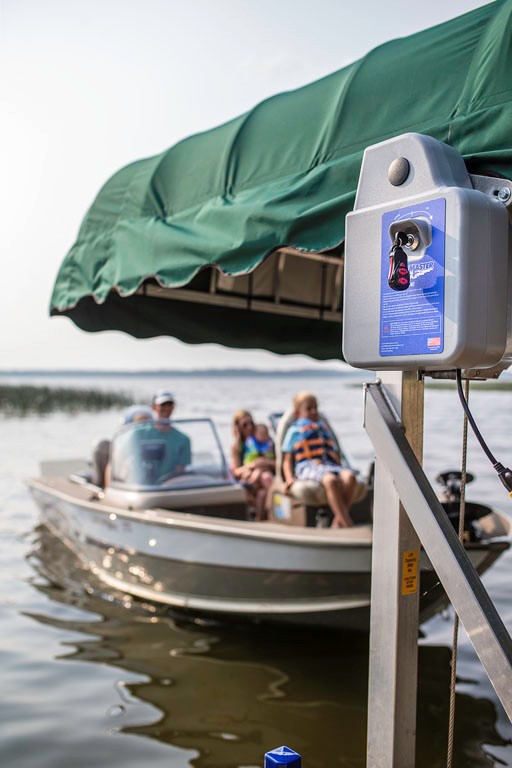
Lift Boss Motor
Lift Boss Motor
A boat lift motor is a popular accessory when you get tired of trying to raise your boat by hand. You’ll probably get one because your better half or the kids have difficulty turning the large wheel. No one has ever complained about having a motor on the lift. They only wish that they had done it earlier.
See this link for more information.
Wireless Remote
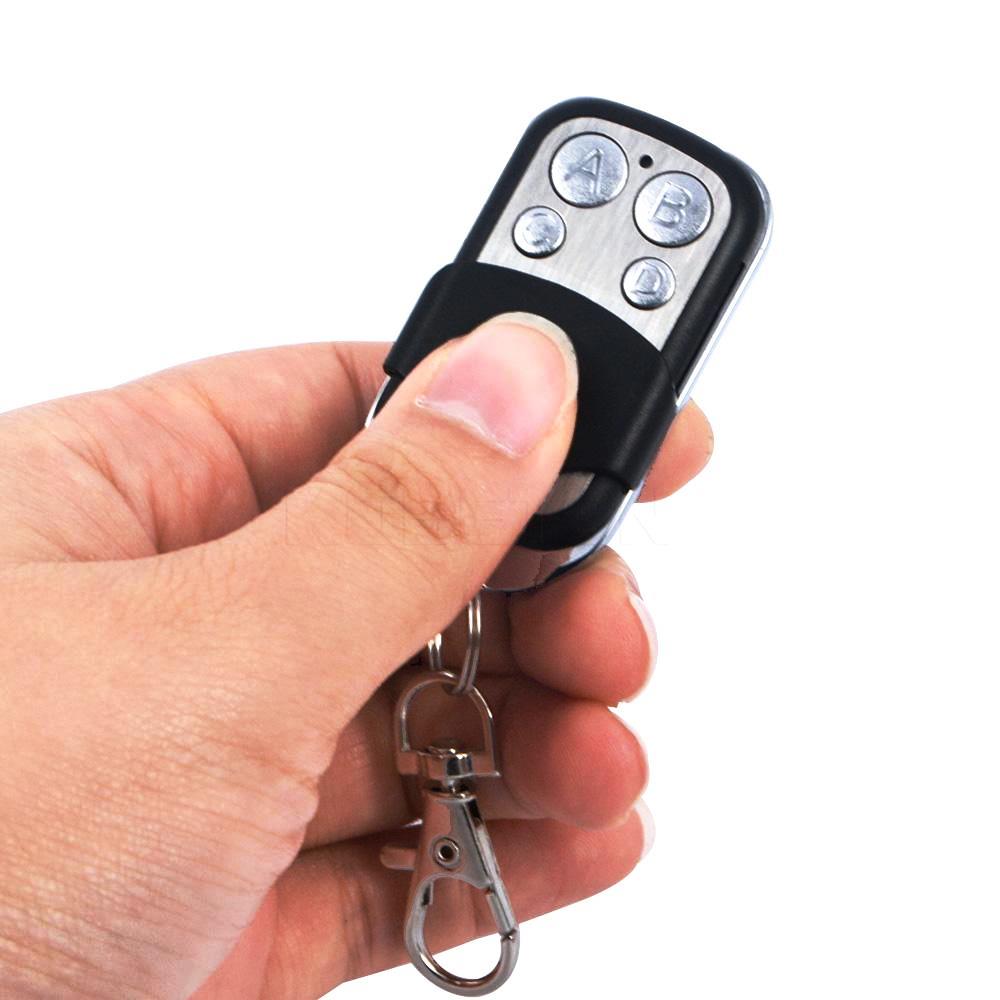
Remote Control
Once you’ve started to accumulate accessories for your pier and boat lift, you may want a more convenient way to control it all. That’s where a wireless remote comes in.
If you have an electric winch operated boat lift, you can get a wireless remote which lets you raise or lower your boat from up to 300 feet away. The same remote can additionally operate
your LED floodlight system. This means you can turn on the lights and lower your boat into the water before even setting foot on the dock.
If that’s not convenient enough, you can even put the key fob remote on your keychain, so it’s always on hand. If you can open your garage and unlock and start your car with a key fob, why not make it just as easy for your boat?
See more lift accessories at this link: Shoremaster
Call PWS for Boat Lift Accessories and Maintenance
Depending on what sort of accessories you’re interested in, such as the bunks and cradles, it’s probably a good idea to get professional help choosing and installing these accessories. PWS is a team of professionals, and we’re well-equipped to handle any maintenance you need for your boat lift in the Door County area.
Give us a call today and let’s discuss how we can make your boat lift and pier as convenient to use as possible!
PWS is located at 7325 St. Hwy 57. That’s 1 mile North of County MM (Hwy 42) and 3 miles South of Sturgeon Bay at the Idlewild Road intersection. Our staff is here year-round to assist you.
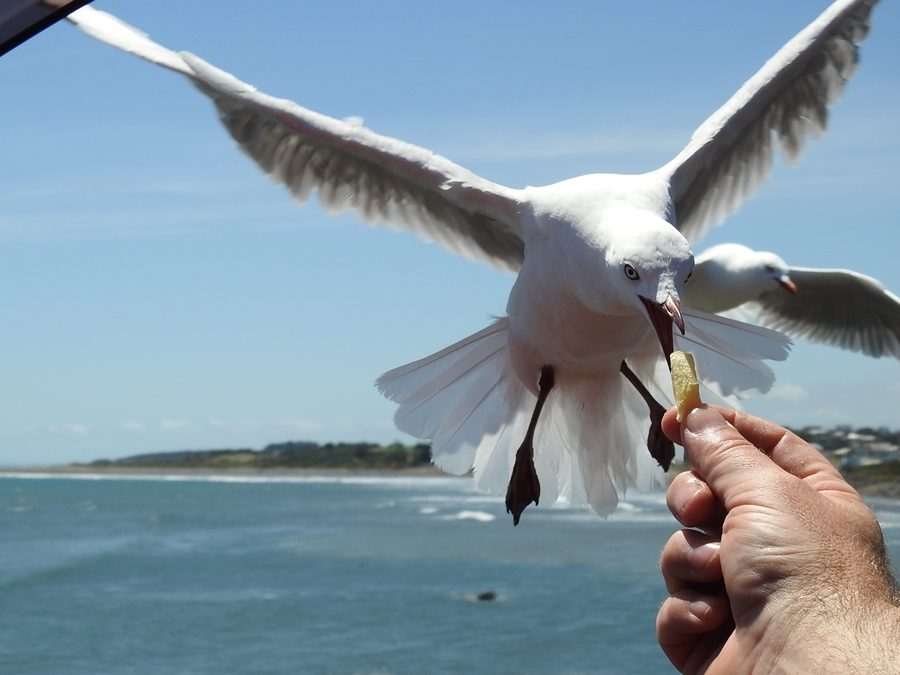
Mar 26, 2019
Sea Gull Deterrents Updated
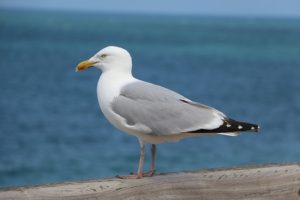
Sea gull
Some of your neighbors tend to be real pests. It seems that they never go away for any length of time. At least not as long as you would like them to. That’s not a nice thing to say. However, in this case, it’s true. Spend any time near the water, and you will notice these pesky neighbors.
In this article, we discuss your neighbors, the Gull family, and the other residents that populate the waterfront and won’t go away. These neighbors have a habit of partying and being very noisy. They also use any open places like a kitchen table and worse yet, as a bathroom. They love docks, boats or canopies In particular.
Chances are you may have encountered these resident birds or at least evidence of their presence. It seems the only way to keep them off your property is by running around and waving your arms. Spouting babble helps too. (P.S. Your neighbors love watching you do that.) However, you may have also noticed that this action is limited in effectiveness. The seagulls and geese will move away and then return when you stop harassing them.
Legally protected
Sea gulls are protected by law. Meanwhile, you have to deal with the mess in the form of leftover food and debris. Incidentally, that debris can contain over 60 diseases as noted in this ARTICLE. That’s 60 diseases that you, your children or grandchildren are then exposed to unnecessarily.
THE FIRST STEP TO KEEP SEA GULLS & GEESE AWAY
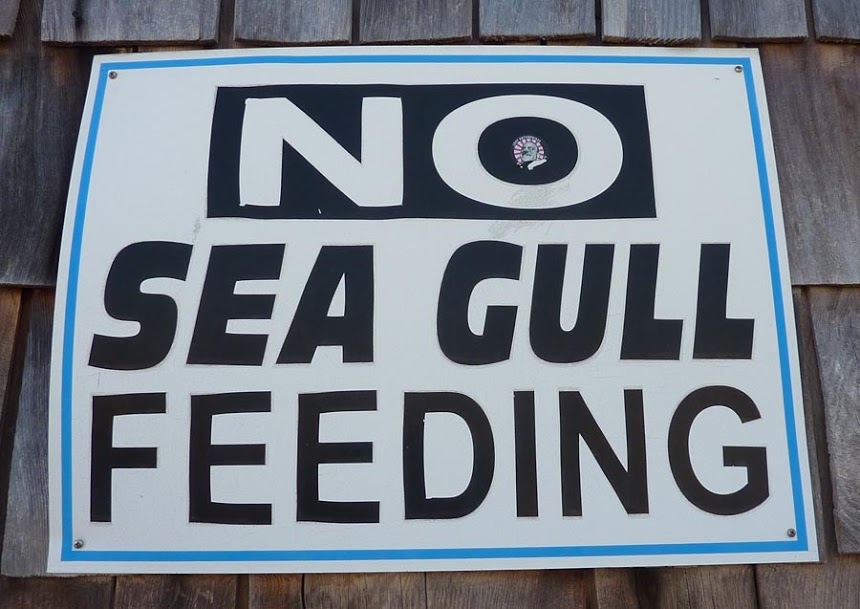
NO feeding sea gulls
The FIRST step is to follow this rule: NEVER feed the gulls. Don’t leave any food where they can see it. Yes, they will get friendly with you if you feed them. You could also become the next “Birdman of Alcatraz.” However, do you want that?
The result will be that the sea gulls will gather on your dock every day waiting for food. Like an unwanted guest, they will spend the nights eating and p__ping on your canopy, boat or dock. Sometimes they will even bring their own food, which is nice for a guest to do. However, the mess they leave behind is NOT so nice.
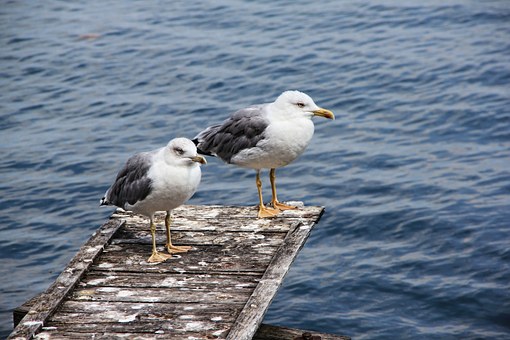
Sea gulls
So how do you get rid of the gulls or better yet – prevent them from coming in the first place?
Hint: Did you ever notice that the sea gull family seldom ventures under trees or in areas that are not open. Read on to find out why this is.
Entanglement and Motion
Let’s start with entanglement. A sea gull fears anything that will restrict their flight. Entanglement is the worst thing that can happen to them. Freedom to fly is their primary means of avoiding danger. If they can’t spread their wings without interference, they can’t escape the threat.
They also fear the erratic movement. Sea Gulls want peace and quiet just like you do.
Dori Poles
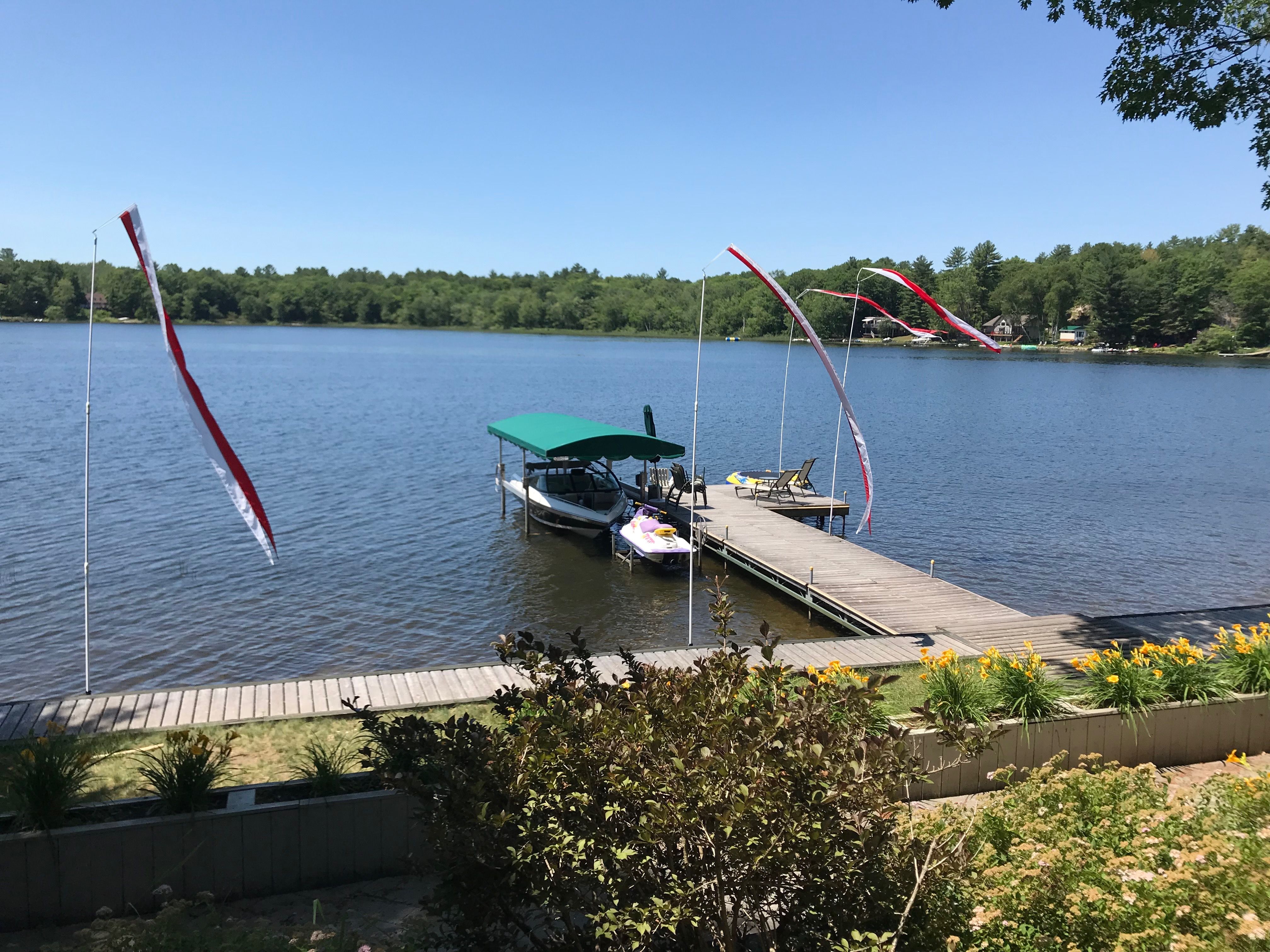
Dori Poles
The pendant or flag deterrent from Dori Pole® is considered one of the most effective systems available. This system was developed initially as an advertising method at festivals as the flags stood high above crowds and due to their bright coloration and versatility caught the eye. People noted that the birds tended to avoid the areas in which they were in place. The pendant or flag style of deterrent is a very versatile system. The pendant attaches to the end of a very long pole. The pole is mounted anywhere that it can be secured and allowed to move with the winds. The combination of movement and the risk of entanglement helps keep the sea gulls away. It also allows visitors on boats to find your place.
Gulls Away®
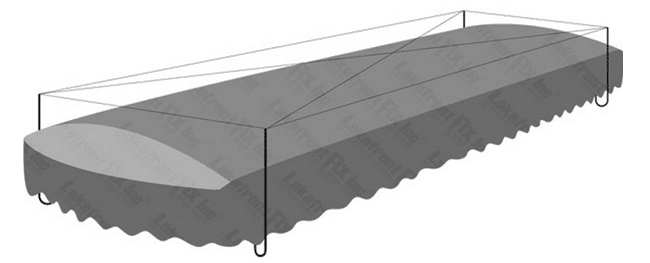
Gulls Away
Another system from Gulls Away® uses transparent fishing line strung over the top of your lift canopy to prevent the gulls from landing.
It works great on the side of the dock too. Set one or more lines in the 12″ – 18″ range above the dock edge. Sea gulls use infrared vision, and the thin lines stand out brightly, day or night, and present an entanglement for them.
This system is useful, and you are probably familiar with its design. The system attaches to the uprights of your lift and extends out over the top of your canopy. It can be placed on a dock also.
Gulls Away® is designed specifically for your boat lift. They attach to the frame itself and are not intended for your dock or other applications without modified mountings. In this respect, the Dori Pole® wins the race.
Bird Spider – 360®
Other approaches to the sea gull problem use wind action to create movement and thus scare away the offending birds. Bird Spider – 360 consists of paddles set at the end of steel rods that spin on a central axis.
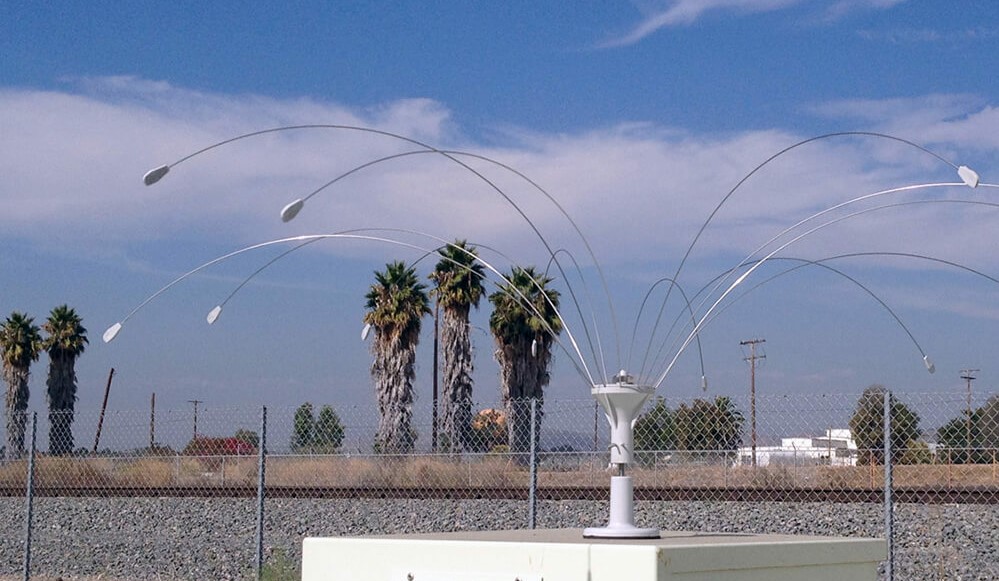
Bird-Spider-360
After years of arm waving, one of the most effective methods of deterring the gull is still “motion.” Geese and sea gulls are skittish. They do not like the erratic movement. They tend to shy away from areas in which there is any movement. So, a moving system is your best bet. The swiveling system, Bird Spider – 360, employs the wind to rotate its lateral arms and thus create the necessary movement to frighten any offending birds. It’s available from 2 ft up to 8 ft dimensions.
Theoretically, this movement will also scare them away as they fly over looking for a nice quiet place to land, like your dock or your canopy. It will connect to round or square frames and comes as a set of two, with six extension arm and paddle assemblies.
Disadvantages
Given the mechanical nature of its design, (screws, pivot points, using natural elements, i.e., the wind, to move the arms) it is prone to vibration over time. This vibration has been known to cause the set screws to fall out allowing the extension arms to detach. Another issue is that the vibration can cause paddles to twist and stop turning or sag to rub the canopy itself. With paddles, this is not a problem. However, it should be noted that these developments are a result of time; the system is effective but may not last as long as other systems. Suggestion: apply Elmer’s glue to the set screws to prevent movement. A small dab is all it takes.
What works to deter a Sea Gull?
Every “solution” has benefits and detriments. Some people are happy with “in motion” designs while others prefer the “static” design. The “in motion” deterrents are both encumbered by the same thing when there is no wind their motion either diminishes significantly or stops altogether, eliminating their effectiveness. The static system, however, produces no motion so according to the formula “motion equals deterrent” this system finds fewer adherents, as it does not necessarily keep the birds from flying over and messing up your canopy. The other significant difference is versatility.
Keeping birds off of your lift, dock, and waterfront is something that nearly everyone can get behind. The systems we have discussed are designed to accomplish this. The choice of which method will work best for you is largely dependent on preference. Each of these systems has specific qualities that will appeal to different people in different ways, and in the end, the look of a system is as important as its functionality.
The sea gull is an intelligent bird. As a result, it is best to keep changing the type of deterrent you use. This way they don’t get accustomed to your efforts. It keeps them “off balance.”
General Rules to follow:
Do NOT feed sea gulls.
Start early in the season with your deterrents, so they aren’t allowed to get into the habit of landing on your dock or canopy.
Rotate your deterrents to keep the gulls “off-balance.”
In a future article, we will discuss options for discouraging spiders and bees.
Do you have a friend that may be interested in this information? Please share a link to this page with them.
PWS is located at 7325 St. Hwy 57. That’s 1 mile North of County MM (Hwy 42) and 3 miles South of Sturgeon Bay at the Idlewild Road intersection. Our staff is here year-round to assist you.
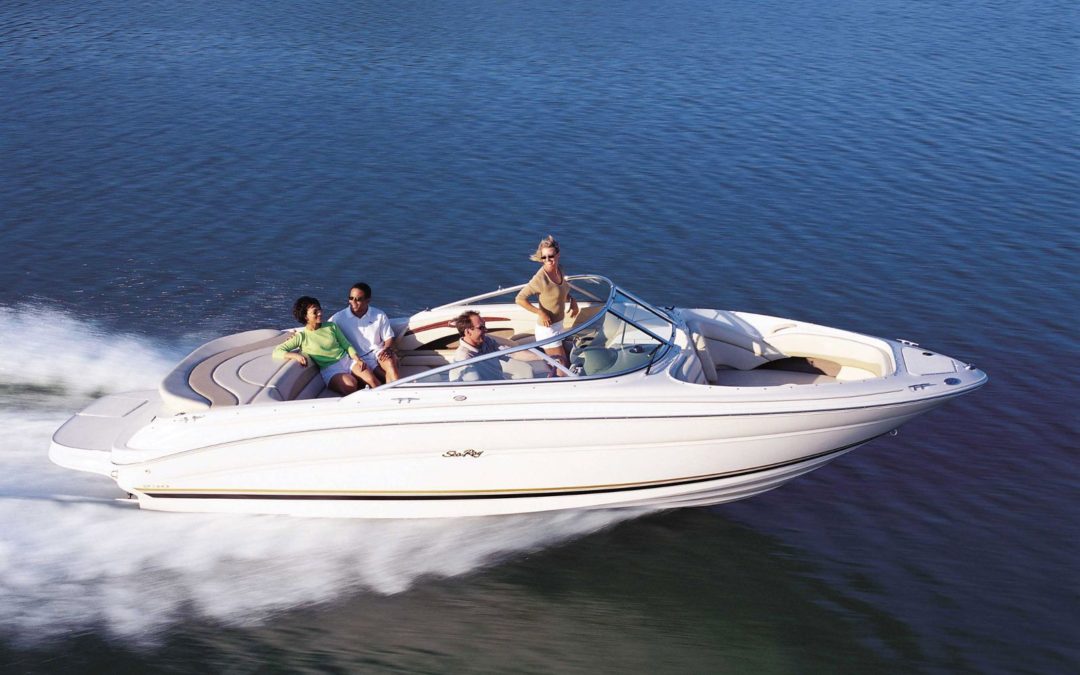
Mar 19, 2019
Is Your Boat Ready for Summer?
Will your boat be ready when Nature stops the snow and cold weather?
Spring weather is only about a month away. Start now to get ready for the boating season. It’s an exciting time of the year. Of course, Mother Nature still has a say in the timing of the warmer weather. However, eventually it will arrive and with it – Boating Season!
You went through all the steps in Fall to winterize your boat. Now, it’s just as important to prepare it for the summer boating. You can’t just drop your boat in the water and go.
Here is a list of things to check before the boating season starts:
Boat Batteries

Interstate Battery
Checking the battery is a given. When you do so be sure to check the following:
- Is it fully charged?
Are all battery terminals clean and secure?
Is there corrosion on the boat cables? If yes, it is time to replace them.
Are the cable clamps clean?
Charge your battery and check it with an amp meter. Check its health now and again in a month. Make sure to replace any battery that did not hold a charge.
Don’t wait until you are ready to launch your boat and find out the battery is weak or dead.
Check all Boat Lights
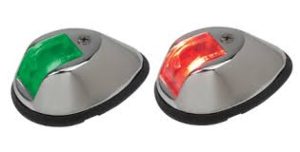
Boat Lights
Now that we know the battery is good be sure to check all of the lights. Plus, clean and tighten all connections. When the boat is bouncing on the water,
a loose connection can cause serious problems. Do you have replacement bulbs available in your kit? Ensure that all wires and connections are clean and tightened.
Electric System
- Inspect all electrical connections have clean, tight, corrosion-free connections.
- Remove corroded terminals and use a wire brush to clean them, along with all cable ends.
- Charge your battery and have it tested to ensure it can hold a charge.
Boat Trailer lights
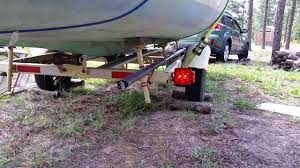
Trailer Lights
You’re checking the boat batteries and wires but how about the trailer wiring. Are the connectors clean? Is the connector on your vehicle clean?
There’s nothing worse than following a trailer with no lights or flickering lights.
Oil
If you didn’t change the oil before storing your boat in fall, be sure to do that before you use it in the spring.
Change the drive oil and the filter at the same time.
Is it time for a new oil filter? How about the gas filter?
Cooling System
Now it’s time to check your boat’s cooling system. In fall, you drained the cooling system to prevent the lines from freezing. Now it’s time to fill it again. Check all hoses for any cracks, especially at the clamps. Empty any raw water at the intake strainer.
Fluid Levels
- Check all fluid levels
- Be sure to change engine oil, oil filters and drive lubricants if you didn’t do it during fall weatherization.
Are the gas hose and connections free of cracks?
- Inspect the fuel system for leaks and pay attention to fuel hoses and connections.
- Evidence of a damaged fuel hose includes brittleness and cracking.
- Are the engine, exhaust, and ventilation systems functioning correctly?
- Don’t use fuel that contains more than 10% ethanol (E10) as it will damage your engine. Better yet – don’t use ethanol in your motor at all.
Remember to keep fuel in your boat over winter to keep moisture out of the fuel tank. We recommend the use of NON-ethanol gas over winter to help prevent gumming up the carburetor, plugs or fuel injectors.
Distributor
Check the distributor for corrosion. You can check the distributor by removing the cap and visually inspecting it. Make sure to re-attach it securely.
Belts
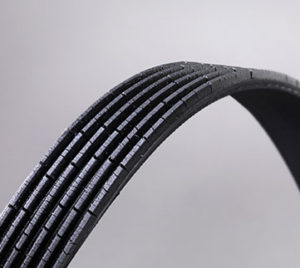
Worn Boat Belt
To determine if the belts need to be replaced, push down on them. Belts should only bend slightly when you do this. If a belt gives a lot when you apply pressure, it needs replacement.
Look for black soot around the timing belts and on the pulleys. If present it is a sign of a bad timing belt. The edges are rubbing against something. Keep in mind that the alternator belt tends to wear out the fastest.
Worn belts may leave a black residue or soot near a pulley and will fit loosely. Check the underside of the belt for cracks and signs of wear.
Propellers
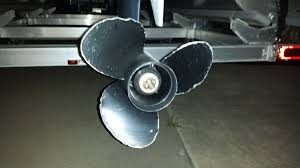
Damaged Prop
- Inspect propellers for pitting, cracks and distortion.
- Damaged propellers will cause vibration and damage to your drive train.
- Make sure the propeller is secured correctly, and have the bearings replaced when needed.
- Inspect the boat hull, looking for blisters, distortions, and cracks.
Drain plug
Be sure to install the drain plug before launching. Remove it when the boat is on your lift so water does not accumulate.
Finally, but not least
Check your life jackets. Are they in good condition? Are there enough on board for all potential passengers and are they the correct size?
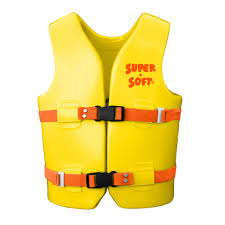
Coast Guard Approved Life Jackets
- Be sure all fire extinguishers are the correct class for your vessel and are charged and stowed in the proper place.
- Take advantage of any safety inspections offered by the US Coast Guard (USCG), USCG Auxiliary or US Power Squadrons.
- Follow this link for more information:
Happy Boating!
Do you have a friend that may be interested in this information? Please share a link to this page with them.
PWS is located at 7325 St. Hwy 57. That’s 1 mile North of County MM (Hwy 42) and 3 miles South of Sturgeon Bay at the Idlewild Road intersection.
Our staff is here year-round to assist you.
Mar 12, 2019
Do you need a lift motor for your boat lift?
Are you still struggling to turn your Boat Lift Wheel?
See https://www.youtube.com/watch?v=7j_LCDD8g2c&list=PLV6h7EzFPiaB5SCPfZtJGsuPLWYkIX8Ol&index=4
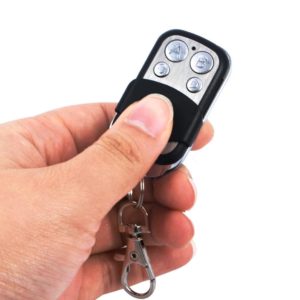
Remote Control
A DC powered Lift Boss motor makes it simple and safe to use a boat lift motor – with no effort!.
If you can push a button to open your garage door, you can raise a 7000# boat the same way.
Read part one of this series (https://wisconsinpws.com/wp-admin/post.php?post=5322&action=edit) to understand the AC version of the Lift Boss. AC power is one of three options available to you. We extensively covered the pros and cons of using the AC option and the use of extension cords.
In this part, we discuss the options for DC powered boat lift motors, which require no extension cords.
There are two DC options – the 12 Volt and 24 Volt system. Fortunately for you, they both use the SAME Lift Boss motor and can be upgraded at any time. Only the charging system changes.
Here are some FAQ about a lift motor
- Do I need a 12 Volt or 24 Volt System?
If you are the person who lowers the boat in the morning and raises it once at night, we are going to recommend a 12 Volt system. You will have plenty of time during the course of a normal day to recharge your system.
- What if I raise my boat frequently during the day?
We will recommend the 12V system and give you an option for the 24V system. You are borderline between the two systems. Another alternative is to use a higher wattage solar panel to help restore lifting capacity quicker. It makes sense that you will use your boat LESS without a lift motor. Need to know how to calculate the total weight of your boat? See https://wisconsinpws.com/wp-admin/post.php?post=4951&action=edit
- Does your boat weigh under 5,000 lbs but you are still struggling to turn the wheel?
We recommend the12 Volt system based on your boat weight and the capacity of your boat lift.
- What if I want to raise my boat FASTER?
If you want your existing 12V lift motor to raise the boat faster – we recommend converting it to a 24 V system regardless of weight. Caution – not all motors allow this. The Lift Boss does allow this conversion. Check with your dealer or call PWS for more information.
Additional Questions
- Will a car battery work on my boat lift?
No. You must use a Deep Cell Marine battery for ANY lift motor brand. Think of it this way – If you tried to start a car (without fuel in it) by keeping the key “on” for several minutes, the battery will wear down quickly. They are not made for lengthy power-draining applications. A deep cell battery is made to handle those demands. It still won’t start without fuel but that’s a different story.
- What battery brand do you recommend?
The zero maintenance, sealed Interstate batteries we use have the capacity for the long power demands of a boat lift motor.
- Do I need a voltage regulator?
If you connect a solar panel to your battery to keep it charged, it is important to include a solar regulator. The regulator will monitor and “regulate” the charging of the battery so that it will not be overcharged. Overcharging your battery will damage it and decrease its overall life span. This also prevents your battery from leaking charge back to the panel.
Remember – A DC Powered Lift Boss motor makes it simple and safe to use a boat lift.
Solar Panel Wattage and Output
You have to re-charge the battery(s) as you use them. Proper charging of your marine batteries with a solar panel requires that you get the correct panel and it must be properly sized for your motor. This will allow the battery to be a consistent and reliable source for your system.
To ensure that your battery is charged properly, make sure the Voltage output is correct for the battery(s) you are using. A 12 V panel should only be used on a single 12-volt battery. If you use it on a 24 V setup you are cutting your charge rate in half.
However, if you tend to use the lift several times a day, then you would be better off to go with a 20 Watt kit with a 12V or 24V output depending on how many batteries you are using. It is key that the output voltage of your solar panel is adequate and in line with the voltage of your battery.
What will batteries connected in Series accomplish?
Batteries in a series connection will increase your voltage from 12V to 24V. This arrangement will not increase your amps, or the amount of electricity moving through the circuit; otherwise known as amp hours (A/H). It will give your lift motor access to 24V of power, thus resulting in a faster lift speed; effectively doubling the rpm of the motor.
The key to this setup is that there is not an increase in A/H, or current, and therefore no increase in the rate at which electricity is delivered to the motor. The extra speed comes from the extra voltage, not the A/H. Your motor simply “sees” that it is connected to 24V as opposed to a 12V battery.
In summary, use the correct lift motor for your boat lift. Then power it with the correct solar array for your needs.
Need Help Planning a solar system For Your boat lift?
Do you have a friend that may be interested in this information? Please share a link to this page with them.
PWS is located at 7325 St. Hwy 57. That’s 1 mile North of County MM (Hwy 42) and 3 miles South of Sturgeon Bay at the Idlewild Road intersection.




































